Honor 8C review: Incredible battery complimenting a beautiful handset
The Honor 8C shows why Huawei is the undisputed king in China.

The midrange smartphone segment in India has gotten really populated with brands launching a new smartphone practically almost every month. One such brand is Huawei’s sub-brand Honor and in a bid to get maximum penetration in the Indian market, they have launched incredible handsets in a short period of time giving them the brand recognition outside China they definitely deserve.
The Honor 8C is a successor to the Honor 7C that was announced earlier this year, and it compares itself with Xiaomi's Redmi Note series. The Honor 8C is a handset that will make you stop and take notice as it comes with all the latest design features and doesn't boast a pricey tag either.
While the design is certainly appealing, it has its shares of compromises — namely, the addition of a micro USB charging slot as opposed to a USB Type-C port, that’s becoming increasingly common on 2018 handsets.
The Honor 8C is priced attractively in India and before we list out the reasons as to why you should cop this handset, lets deep dive into this product and put it through the paces to give you a fair assessment.
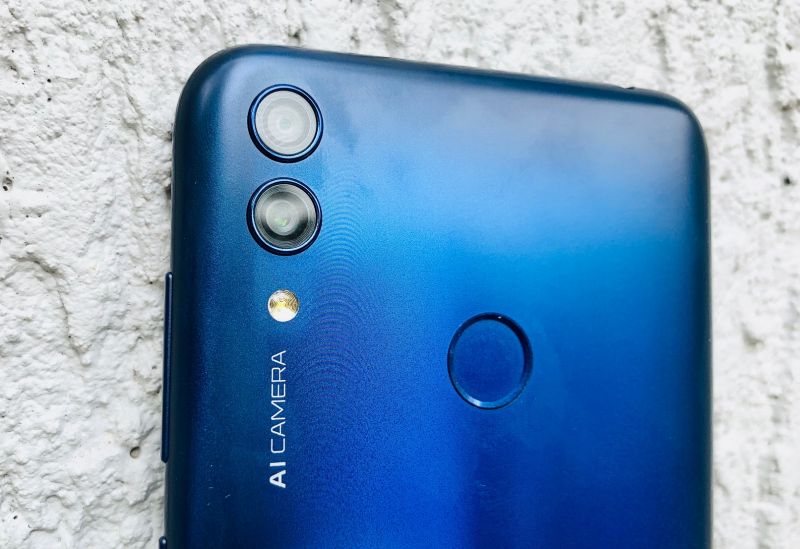
Design, Build
To start off, the Honor 8C borrows design traits from all the top-end smartphones in the market. It has a dual-tone rear panel and dressed unapologetically in premium plastic. At first glance, we would not fault you for misinterpreting the design for metal or glass as it does appear to look like it’s made of costlier materials. The Honor 8C looks like some of the more expensive handsets that have been launched, but comes at almost quarter of the price. This is completely in line with Honor’s strategy of providing more bang for your buck.

The Honor 8C features an incredibly high 86 per cent screen-to-body ratio that absolutely betrays its price point. Very rarely would you find a large display with minimal bezels at such an affordable price. Featuring a notch that’s designed to perfection, and bezels on the sides that are so slim, we feel that it’s design is similar to the extremely expensive iPhone XR, at least from up front.
The build quality is another trump card which Honor is not afraid to show off. Dressing the rear in a matte-finished polycarbonate surface works to its advantage as it refrains from attracting fingerprint residue easily as compared to most glass backs today. Needless to state, we were left impressed by the dual-tone colour implemented on the rear, making it in a word — classy. Also, because of the matte finish, we feel that the device will retain its ‘newness’ for quite a while to come.
When Honor announced the 8X, it employed separate circular camera modules. Being an 8-series device, the Honor 8C features a similar designed camera layout. The design appears a lot more streamlined than the designs of old and in the process giving it a very modern look. The rear also plays home to the dual-tone LED flash and a circular fingerprint scanner that’s has a very zippy performance.
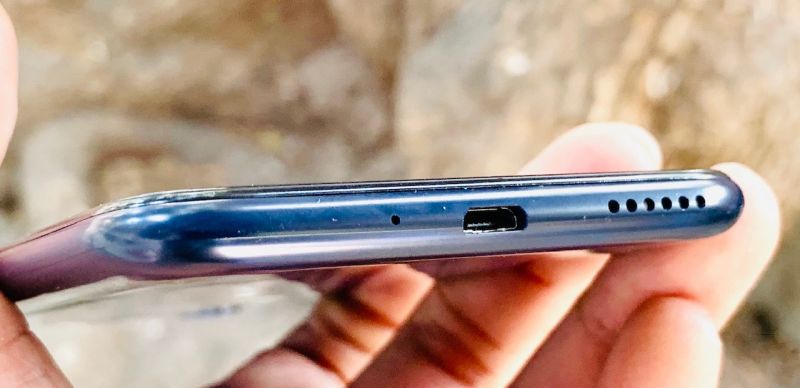
The handset, unfortunately, comes with a micro USB charging port and not a USB-C slot — but it is not something that could be taken against it. However, Honor’s reasoning isn’t about keeping the costs down to a minimum, but rather that micro USB cables are more freely available. So, charging the device with cables procured from earphones and a multitude of other accessories becomes all the more convenient.
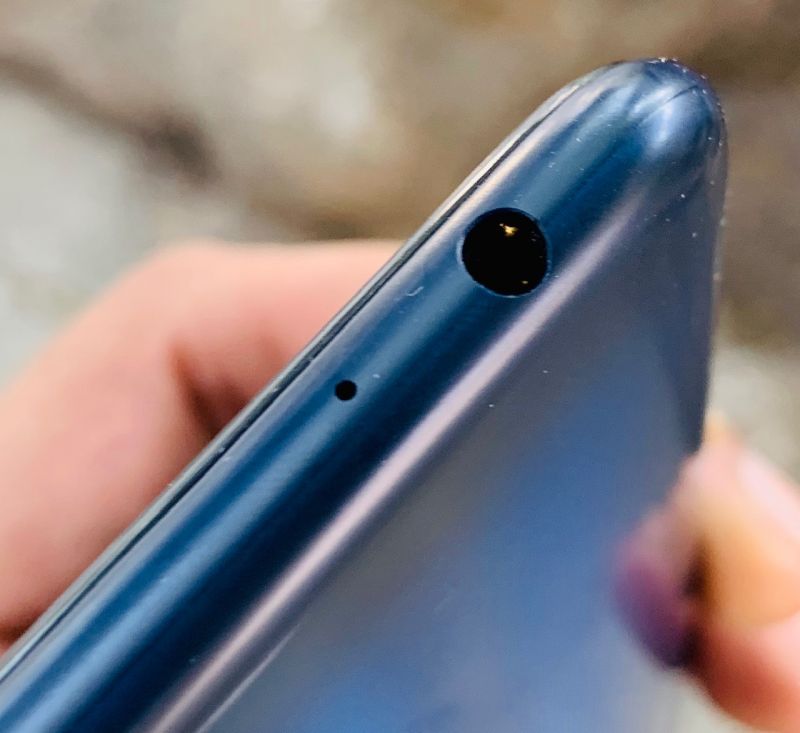
Honor hasn’t bid adieu to the headphone jack either so pairing the 8C with your pre-existing headphones becomes beneficial as it can be still argued that wireless headphones still don’t offer the audio quality that wired headphones provide. A nice addition to the mix is a triple slotted SIM tray. This means you can add a two nano-SIM cards along with a microSD card up to 256GB to expand upon the existing storage. The power button and the volume rockers on the right feel great to the touch; however, we wished that the power button would have had some texture to differentiate it between the volume buttons. The notch comes with a soft flash which allows you to adjust its brightness up to three levels. Also, neatly housed in the earpiece is the notification LED which we feel is a good touch. Apart from this, the 8MP front-facing camera is also in this notch.
Overall, based on just the design of the Honor 8C, we would recommend this handset as it certainly looks a lot more expensive than it actually is.
Display
Being a midrange handset, you won't find a high-res full HD display here like that is seen on the Honor 8X; instead, you get a 6.2-inch IPS LCD HD+ display that boasts a resolution of just 1520 x 720 pixels. While the resolution may be a put off to some, handsets with FHD+ displays assert themselves as a top performer — thanks to the lesser strain on the processor from the graphics and display end. Out of the box, you will be greeted with a vivid display that is usually found on handsets that are found in tiers higher than this.
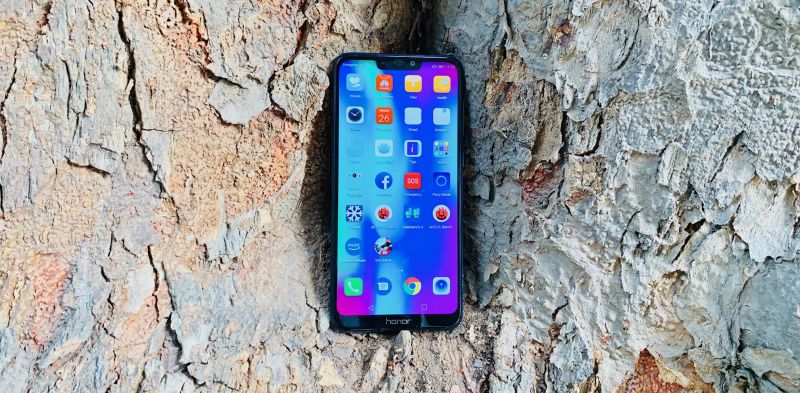
Colours on the Honor 8C's display appear accurate and there is no oversaturation visible. The display is sharp with clear details. This makes viewing content here an absolute pleasure. The size of the display, in our opinion, is right, as it can be ideal for gaming or streaming videos. With there being clarity in texts, this handset can even be used for e-books. The overall brightness levels are decent here; but in direct sunlight, it can be highly reflective, making it difficult to read.
Software
The Honor 8C comes loaded with Android 8.1 Oreo and laced with EMUI 8.2. To start off, there is a tonne of bloatware here and this is one of the qualms people have with Huawei and Honor handsets in general. However, navigating around this UI is extremely easy and there is absolutely no learning curve, making it one of the better custom interfaces around out there.
EMUI is customisable to an extent and you can choose between a standard layout or an app drawer option. Strangely, we found the default Standard version to be more convenient. And in our experience, we find that most people who purchase Honor phones do very little to no customisations to the UI and this is where it trumps other handsets.

Like other Honor handsets that have been launched in the recent past, it comes with the regular list of third-party apps such as Facebook, Messenger, Netflix and Camera 360. Apart from the aforementioned apps, there are Honor apps as well such as AppGallery, Health, Phone Manager, HiCare, Honor Club, Ride Mode, and Party Mode which you may or may not want to use. Some of these apps can be uninstalled while the others you’re just stuck with. Honor should have definitely added the option to delete any app which you do not require, for a cleaner user experience. Other features of the UI include an option to hide the notch if you are averse to it, a DND mode where while gaming you won’t get disturbed and a dual-Bluetooth connection.
While there is no official confirmation on the same as of yet, we expect this handset to be updated to Android 9.0 Pie.
Performance
Strangely, the Honor 8C doesn’t come with its home-grown HiSilicon Kirin SoC; but instead, this is the first handset to come with Qualcomm’s all new Snapdragon 632 chipset — which will be the first handset to launch this SoC in India. This chipset is the successor to the SD630 and it comes with a Kryo 250 CPU that boosts performances up to 40 per cent over its predecessor. This chipset has been designed to support advanced photography as well as enhance the overall gaming experience as it takes advantage of its power efficiency. This octa-core CPU has been clocked at 1.8GHz and is paired with an Adreno 506GPU — which means that while the Honor 8C may not be a gaming handset, it is capable of handling games such as PUBG to an extent. We tried running Asphalt 9 on the handset and it did manage to play the game; however, the default settings were toned down quite a bit, which wsa expected.
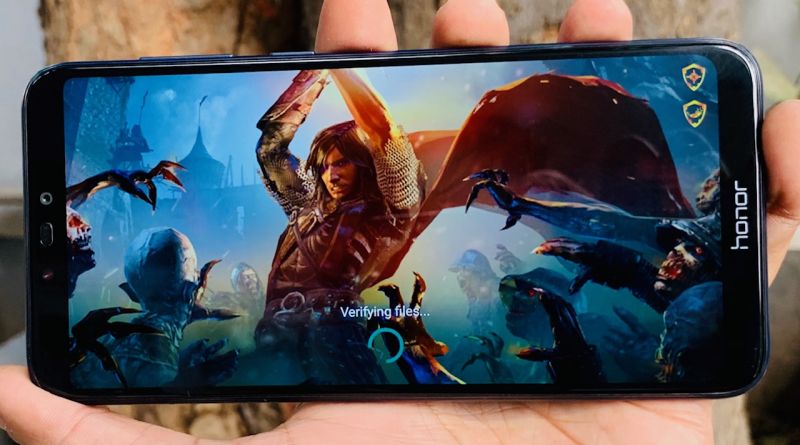
The handset comes with 4GB of RAM and 64GB of storage. There is also a variant configured at 4GB RAM and 32GB of storage. While using this handset to play casual games, the Honor 8C excelled in every department with no lag or stutter visible. Games like Asphalt 9 are certainly playable, however, if you do want stellar graphics, then this handset may not be the one for you. Multi-tasking here is a cinch with it managing to retrieve information from apps that have been placed in the background for quite a while. This makes productivity on the handset absolutely doable.

We ran a few benchmarks and in the popular Geekbench 4, the handset gave us 1258 points in the single-core test, while in the multi-core test scored 4651 points. In the exhaustive AnTuTu 3D benchmarking tool, the 8C scored 103326 points and in the renowned PCMark test, it provided a score of 5817 points. These scores are on par with handsets from this segment — no complaints here.

The handset comes with a rear-mounted fingerprint sensor that is more than up to the task. It registered our print every time we placed our fingers on it. We expect nothing less from a 2018 handset — the 8C also comes with facial recognition software for unlocking the phone. This performance was intermittent with it working half the number of times we tried to take advantage of it. In the process, we ended relying on just the fingerprint sensor to let us in.
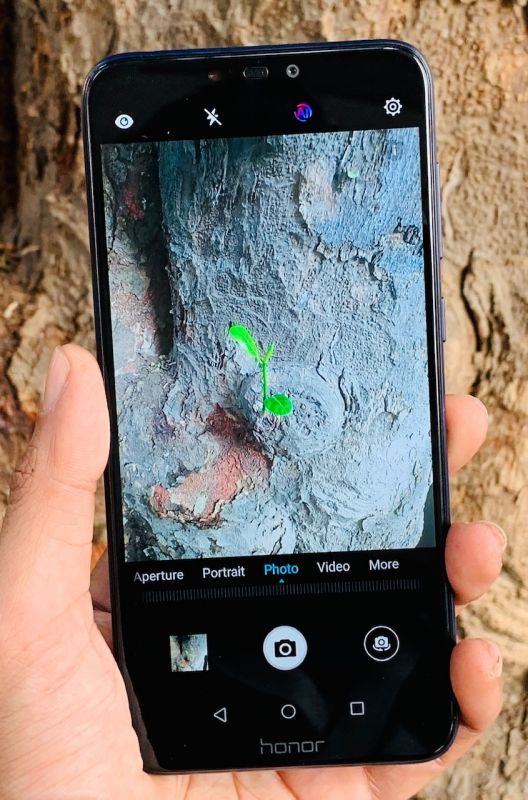
 On-screen we can see that the colours appear washed out. This is represented in the photo (left) captured as well. This is mostly visible in direct sunlight. In general everyday shots, the image quality is a lot better.
On-screen we can see that the colours appear washed out. This is represented in the photo (left) captured as well. This is mostly visible in direct sunlight. In general everyday shots, the image quality is a lot better.
Cameras
The main USP here is its AI-powered cameras. Honor has added a 13MP + 2MP dual-rear camera setup on the back and this is probably the handsets biggest selling point as it has included AI to capture the best possible photograph based on the current lighting condition. In theory, this may sound great, but we were also disappointed with the camera’s performance. The colour reproduction was completely off — at least with regards to our review unit. Colours appeared entirely washed out and overall tones looked quite muted. (check the photo above, which speaks of the image of the Honor 8C captured using another phone) Another issue we faced with the cameras is that they took really long to focus on the subject and in the process we lost quite a few shots. While outdoor shots can be acceptable as they pack in a lot of detail, indoor shots appeared to have a lot of noise. The overall camera performance is below average.

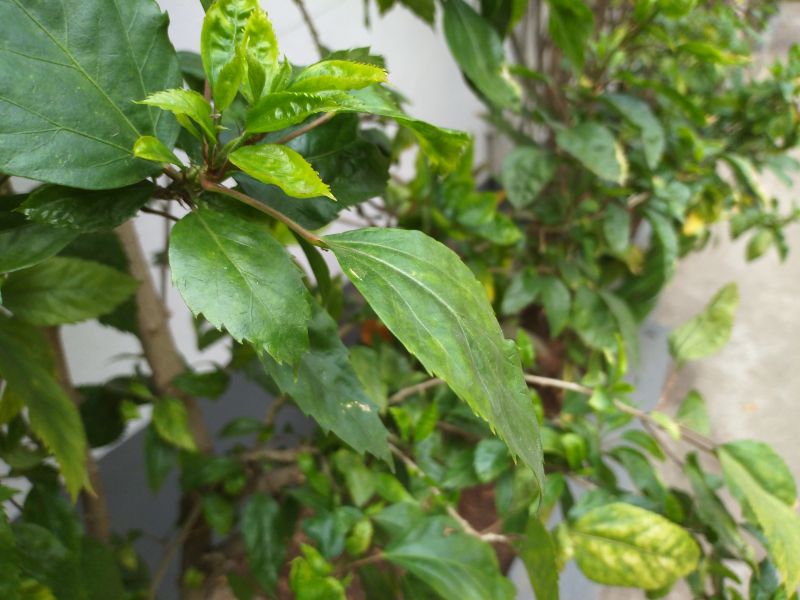
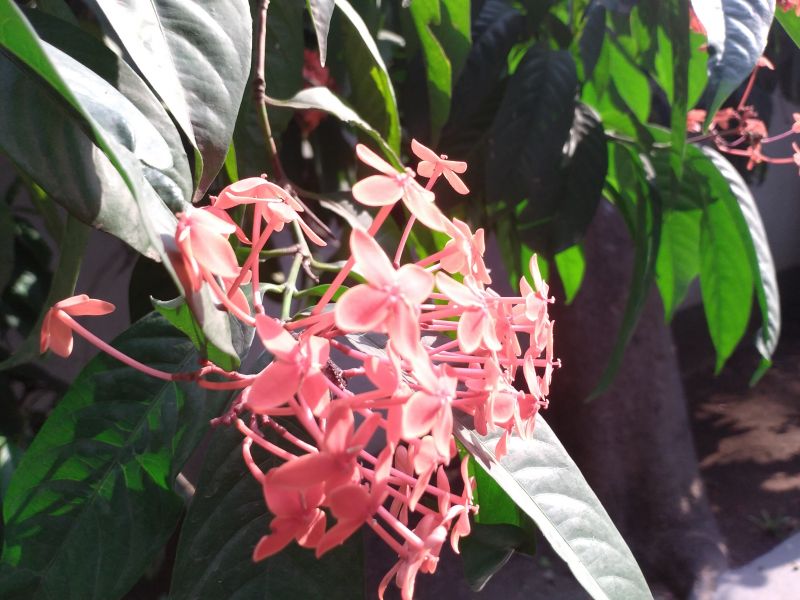 Honor 8C review camera
Honor 8C review camera




The 8MP front-facing camera fared no better — skin tones look off as well, especially while shooting indoors. Using the selfie camera for outdoor shots provided better results as skin tones appeared natural with no oversaturation creeping in. The camera also has a tonne of AR filters which are divided into effects and backgrounds. These are quite entertaining and can be used for sharing on social media. The handset also comes with a Beauty mode that aims to polish out any blemishes you happen to have on your skin. While this may be fun for some, we recommend turning this mode off for the most natural results.
Battery
The battery on the Honor 8C is rated at 4000mAh and this is one of the strongest points of the device. While using the handset extensively and as our daily driver for the week, we always had about 30 per cent of battery still spare on the following day. If you do happen to play a couple of games a day, watch an episode from Netflix, stream music using Bluetooth earphones, you will definitely get a whole workday’s worth of use and then some more till you hunt for that charger. The battery life of this handset is truly impressive. However, it has to be said that this is completely subjective and it will differ from individual to individual. Also, don’t expect to get the same battery life you experience when the handset is new as batteries tend to wear off a bit over the course of its life.

Verdict
The Honor 8C is available in two configurations 4GB/32GB and 4GB/64GB and is priced at Rs 11,999 and Rs 12,999 respectively. The handset has a lot going for it especially in terms of its design and more so it’s incredible battery life. The only downside noticed here is its camera and this is quite disappointing. With that being said, if you are interested in a midranger that has looks to flaunt, an incredible battery and a handset that can be used for productivity, then the Honor 8C is a handset that’s worth considering.
